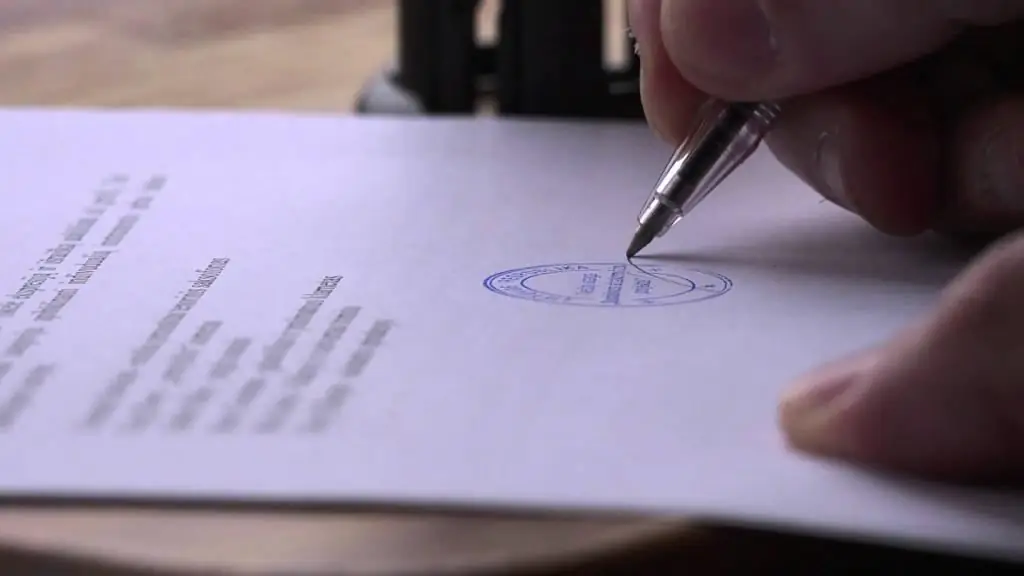2025 Author: Howard Calhoun | [email protected]. Last modified: 2025-01-24 13:10:31
The activity of any enterprise is closely connected with the maintenance and processing of primary documentation. It is necessary for reporting, calculating tax payments, making management decisions. In the article, we will consider what it is - primary documentation in accounting - and how it is processed.

Basic concepts
Primary documentation in accounting - what is it? It is called evidence of the fact of a business transaction, reflected on paper. Currently, many documents are compiled in the automated system "1C". The processing of primary documentation involves the registration and accounting of information about completed business transactions.
Primary accounting is the initial stage of fixing the events taking place in the enterprise. Business transactions are actions that entail changes in the state of the assets or capital of the organization.
Processing of primary documentation in accounting: an example of a scheme
As a rule, in enterprises under the concept of "work withdocumentation" implies:
- Obtaining primary data.
- Pre-processing information.
- Documentation.
- Approval by management or specialists authorized by order of the director.
- Reprocessing primary documentation.
- Performing the actions necessary to conduct a business transaction.

Classification
There is one-time and cumulative primary documentation. The processing of information contained in such papers has a number of features.
One-time documentation is intended to confirm an event once. Accordingly, the procedure for its processing is significantly simplified. Cumulative documentation is used for a certain period of time. As a rule, it reflects an operation performed several times. In this case, when processing primary documentation, information from it is transferred to special registers.
Documentation requirements
Primary documentation is drawn up at the time of the operation or immediately after its completion.
Reflection of information is carried out on special unified forms. In the absence of approved forms, the enterprise can develop them independently.

Stages of processing primary accounting documentation
At each enterprise in the state there is an employee responsible for working with primary information. This specialist should knowthe rules for processing primary documentation, strictly comply with the requirements of the law and the sequence of actions.
The stages of primary documentation processing are:
- Taxi. It is an assessment of the transaction reflected on paper, an indication of the amounts associated with its implementation.
- Grouping. At this stage, documents are distributed according to common features.
- Account assignment. It assumes the designation of debit and credit.
- Extinguishing. To prevent re-payment on primary documents, the accountant puts a mark "paid".
Mistakes in documents
They can occur for various reasons. Basically, their appearance is caused by the employee’s careless attitude to the work he performs, the illiteracy of the specialist, and the malfunction of the equipment.

Correction of documents is highly discouraged. However, in some cases, it is impossible to do without correcting errors. The accountant must correct the mistake made on the primary documentation as follows:
- Cross out the incorrect entry with a thin line so that it is clearly visible.
- Write the correct information above the crossed out line.
- Check "Corrected Believe".
- Indicate the date of adjustment.
- Sign.
The use of corrective agents is not allowed.
Working with incoming documents
The process of processing incoming papers includes:
- Determining the document type. Accounting papers always contain information about completed business transactions. For example, they include an invoice, an order to receive funds, etc.
- Checking the details of the recipient. The document must be addressed to a specific company or its employee. In practice, it happens that documents for the purchase of materials are specially issued to the company, although the contract with the supplier has not been concluded.
- Checking signatures, seals. The persons signing the document must be authorized to do so. If the sighting of primary papers is not within the competence of the employee, then they are invalidated. As for prints, in practice errors often occur in those enterprises that have several seals. The information on the imprint must match the type of document it is on.
- Checking the status of documents. In case of detection of damage on papers or lack of any sheets, it is necessary to draw up an act, a copy of which should be sent to the counterparty.
- Checking the validity of the event reflected in the document. Employees of the enterprise must confirm the information about the fact of the transaction. Documents on the acceptance of valuables are certified by the warehouse manager, the terms of the contract are confirmed by the marketer. In practice, there are situations when a supplier receives an invoice for goods that the company did not receive.
- Define the period to which the document belongs. When processing primary papers, it is important not to record the same information twice.
- Define the accounting section. Upon receipt of the primarydocumentation, it is necessary to establish for what purposes the delivered values will be used. They can act as fixed assets, materials, intangible assets, goods.
- Determine the register in which the document will be filed.
- Register paper. It is carried out after all checks.

Work with outgoing papers
The processing of this type of documentation is somewhat different from the above.
First of all, an authorized employee of the enterprise forms a draft version of the outgoing document. On its basis, a draft paper is being developed. It is sent to the manager for approval. However, another employee with the appropriate authority can also approve the draft document.
After certification, the project is drawn up according to the established rules and sent to the recipient.
Workflow planning
This stage is necessary to ensure prompt receipt, sending and processing of documentation. For the competent organization of document circulation at the enterprise, special schedules are developed. They indicate:
- Place and term of registration of primary papers.
- Name and position of the person who prepared and submitted the documents.
- Accounts derived from securities.
- Time and place for keeping documentation.

Accounting registers
They are required for registration of primary documentation. At the same time, onpapers are marked with an accounting mark. It is necessary to prevent re-registration of documents.
Primary papers can be stored in electronic registers. However, at the request of government agencies or counterparties, the enterprise must provide hard copies.
Features of document recovery
Currently, there is no clear procedure for the restoration of papers in the regulations. In practice, this process includes the following activities:
- Appointment of a commission to investigate the reasons for the loss or destruction of documents. If necessary, the head of the enterprise may involve law enforcement agencies in the procedure.
- Appeal to a banking organization, to counterparties for copies of primary documents.
- Correction of income tax return. The need to submit an updated report is due to the fact that undocumented costs are not recognized as expenses for tax purposes.
In case of loss of primary documentation, the IFTS will calculate the amount of tax deductions based on the available papers. At the same time, there is a possibility that the tax authority will apply liability measures in the form of a fine.

Common mistakes in the process of issuing primary papers
Generally, people responsible for record keeping commit the following violations:
- Fill out forms that are not unified or approved by the head of the enterprise.
- Don't specify details orreflect them with errors.
- Do not approve documents with their signature or allow employees who do not have authority to sign papers.
Documentation confirming the facts of business transactions is extremely important for the enterprise. Its design must be approached very carefully. Any mistake can lead to negative consequences.
Recommended:
Accounting documents are The concept, rules for registration and storage of accounting documents. 402-FZ "On Accounting". Article 9. Primary accounting documents

Proper execution of accounting documentation is very important for the process of generating accounting information and determining tax liabilities. Therefore, it is necessary to treat documents with special care. Specialists of accounting services, representatives of small businesses who keep independent records should know the main requirements for the creation, design, movement, storage of papers
What is primary documentation in accounting? Definition, types, features and requirements for filling

Accounting of any enterprise deals with primary reporting. The list of primary documentation in accounting includes several mandatory papers. Each of them is related to the stages of the business process. If the employees of the organization do not maintain primary documentation in "1C: Accounting", the company will face tangible sanctions
Primary accounting documents: types, processing and storage

Carrying out accounting at enterprises of various forms of ownership is impossible without documentary reflection. Not a single procedure, not a single project, not a single business transaction is carried out without a correctly executed document, regulated by the internal orders of the enterprise and external legislative norms. Each action performed by an employee is reflected in the documentary base, which is based on a list of primary documents
Accounting for working hours in the summary accounting. Summarized accounting of the working time of drivers with a shift schedule. Overtime hours with summarized accounting of wor

The Labor Code provides for work with a summarized accounting of working hours. In practice, not all enterprises use this assumption. As a rule, this is due to certain difficulties in the calculation
Primary milk processing: technology and sanitary requirements

Milk, as you know, is a perishable product. It must be stored and transported properly. Otherwise, a product that is not very tasty, and possibly even unsafe for he alth, will reach the consumer

